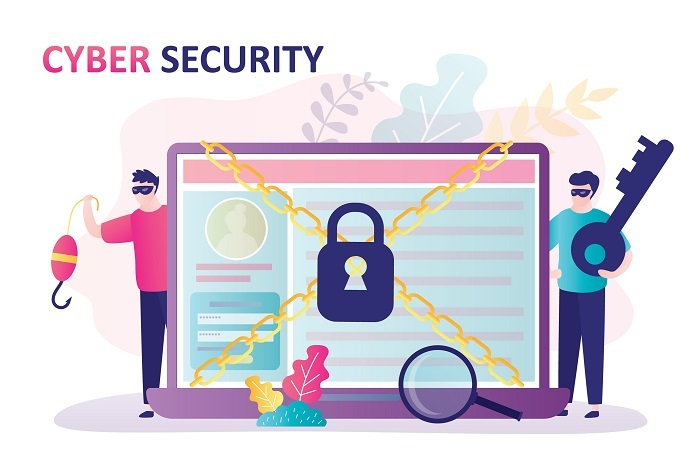
 Data Structure
Data Structure Networking
Networking RDBMS
RDBMS Operating System
Operating System Java
Java MS Excel
MS Excel iOS
iOS HTML
HTML CSS
CSS Android
Android Python
Python C Programming
C Programming C++
C++ C#
C# MongoDB
MongoDB MySQL
MySQL Javascript
Javascript PHP
PHP
- Selected Reading
- UPSC IAS Exams Notes
- Developer's Best Practices
- Questions and Answers
- Effective Resume Writing
- HR Interview Questions
- Computer Glossary
- Who is Who
Top Cyber Security Threats to Your Business in 2023
The phenomenon of cyber security came into existence when the dot com boom bought the world online. Cyber crimes have been happening since then. But recent times saw a pandemic, increased geopolitical tensions, fierce political contests, and whatnot. In light of these events, the number of cybercrimes has surged exponentially and their severity has increased manifold.
Cyber threats are subtler and more sophisticated than ever before. The only way to counter these threats today is proactive protection.
Top 10 Cybersecurity Threats

Social Engineering
Social Engineering is one of the most prominent reasons for financial losses in the US. It involves tricking gullible humans into giving away sensitive information. Therefore, no matter how strong the security of the software or operating system is, the perpetrator can make a way into it through humans. The perpetrator first does the homework by gathering all the necessary background information of the victim to know the potential point of entry. Moving ahead, the perpetrator, masked as a professional, gains the victim's trust which further leads to the victim breaking security practices like giving away the CVV code of their credit card or password of their bank account, etc.
There are various techniques of social engineering attacks. Baiting involves making false and tall promises to the victim just to get their sensitive information. Scareware involves threatening the victim by bombarding their device with false alarms and notifications to make them believe that their device is infected and get a fraud app installed on their device in the name of protection. Phishing, one of the most prominent forms of social engineering attacks, involves creating a sense of urgency among the victims through emails or text messages, only to have their sensitive information divulged eventually.
Malware and Ransomware
Malware, which is malicious software, is sneakingly installed in the victim's device, sometimes by the victim itself, which exposes the device to attackers. Attackers can remotely control the victim's device and steal all the sensitive information from it. There are slim chances of the device recovering from a malware attack. Hence, it can be crippling for both small and medium enterprises. Malware attacks are also contagious. This means that once a system gets infected with malware, it can ruin the network of systems.
Similarly, ransomware can be equally devastating. Similar to malware, ransomware is malicious software that locks the victim's device and the victim is denied access to all their sensitive information. The only choice left to the victim is to pay a ransom and get the access back. Hence the name, ransomware. Mind you, there is no guarantee that the victim will receive their access back, once the payment is done. Small businesses often fall prey to these attacks as the attackers are aware that these companies do not have a solid mechanism to back their data. Even the Russian government is using malware attacks against Ukraine to keep the war going.
Insider Threats
Nearly 25 percent of data breaches are done by employees working within that organization. It can come out of greed or out of bitterness against the boss. Either way, it can cause significant damage to the firm. Human nature can be complicated as it does not follow a fixed pattern. Hence, special measures should be taken to protect the data from these insider threats.
A security awareness drive should be carried out within the organization which equips the employees against the malicious behavior of others within the organization. In the case of an employee leaving the company, adequate measures should be taken to revoke their access to all the company's resources. Machine learning should be leveraged for analyzing the behavior of the employees. This will help in flagging an unusual activity within the organization, at the earliest.
Vulnerabilities of Cloud
There is a common notion among people that a cloud is a secure option. But it is not completely true. IBM reports that data breaches in the cloud have increased by 150 percent over the last five years. With the world having to live with a pandemic for an indefinite time, the need for these clouds is only going to increase. Hence, cloud security is one of the major concerns for an organization today.
Various steps have been taken to strengthen the security of the cloud. One of the steps includes, "Zero Trust Cloud Security Architecture". These systems function as if the network has already been compromised. There are verifications at each and every step. Users need to sign in every time instead of enjoying sustained access to the data.
Third-party exposure
Sometimes, just protecting your systems is not enough. Attackers can hack your data by attacking some third-party network that has access to your data. The same happened when over 250 million Facebook, Instagram, and Linkedin accounts were hacked and their personal data was leaked. Instead of penetrating through the networks of Facebook, Instagram, or Linkedin, the attackers chose Socialarks, a third-party contractor, employed by these three companies.
The phenomenon of Subcontracting is on the rise. More often than not, companies give access to critical information to these contractors. Hence, a proper background check should be carried out before hiring a contractor.
Conclusion
With millions of hackers burning the midnight oil to devise new attack strategies, protecting your networks against them can be overwhelming. Hence, it is advisable for companies to have a backup plan ready in case of a cyber-attack. Additionally, reading about new ways of data breaches and updating your systems for defense, goes a long way in your organization's digital health.

